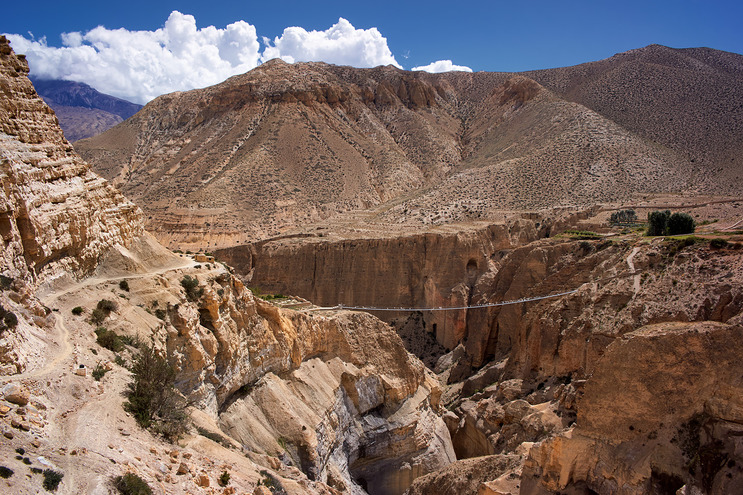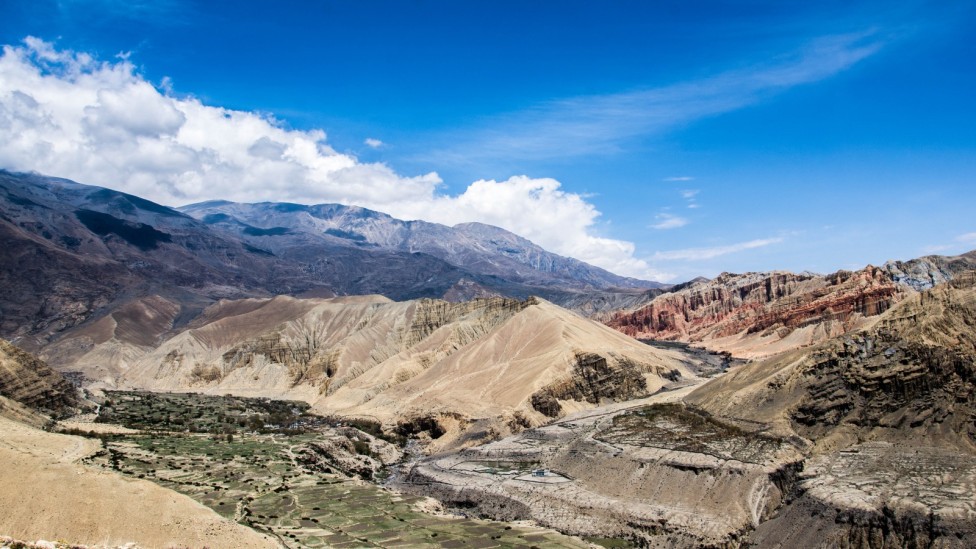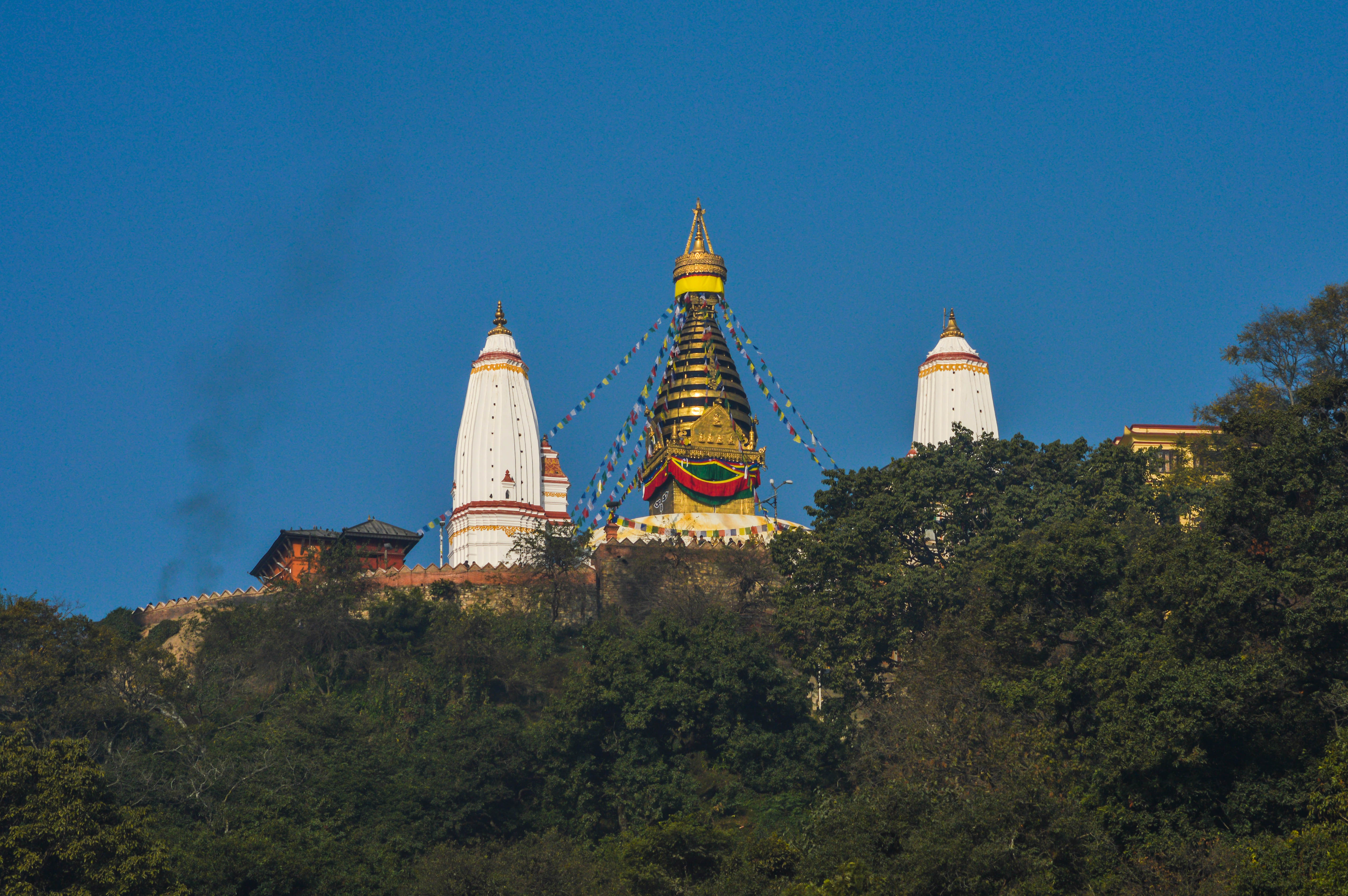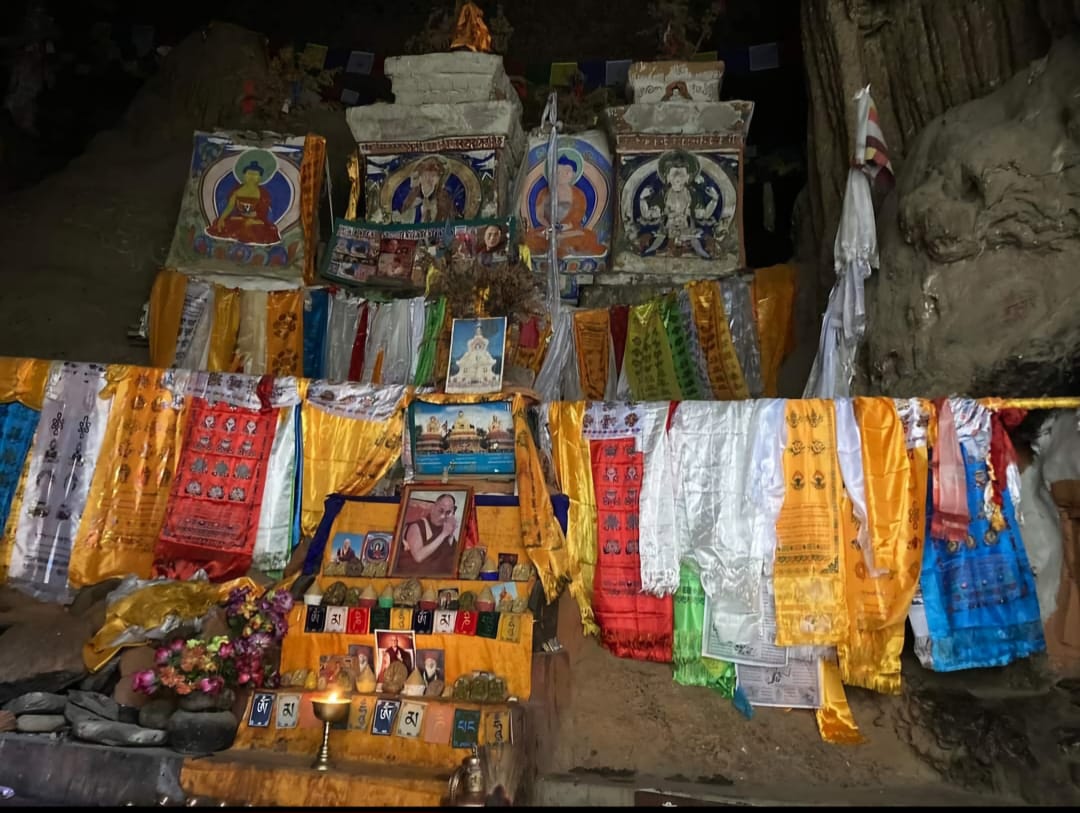Encounter Ancient Buddhist Monastery
Upper Mustang is the house of ancient Buddhist monasteries which are built since 8th century with best art decorations, antique Buddhist holy texts, prehistoric spiritual energetic abode and primitive people and their culture.
Lo Ghekar Monastery- Ghar Gumba: Ghar Gumba or Lo Gekar Monastery of Upper mustang is one of the oldest monastery of the world which was built in 8th century by Guru Rimpoche or Padmasambhaba. The monastery is totally rooted in Tibetan Buddhist traditions and considered one of the significant spiritual sites of Mustang region.
Lo Gekar reflects the monastery's spiritual importance and its connection with purity and virtue. "Lo" refers to the region of Lo, which is the ancient name of Mustang region. "Gekar" represents pure virtue.
Chungsi Cave Monastery: Ranchung Chungsi Cave, one of the oldest cave of Upper Mustang, Nepal, is located between the trekking routes of Samar and Syangboche village where a tantric Guru Rimpoche while his way to kill monster did meditation inside the cave.
In Hindu tradition, it is believed that Lord Shiva, during his journey to the sacred mountain Kailash, stopped at various places for meditation and spiritual practices. According to some local legends and beliefs in the region, it is said that Lord Shiva meditated in Chungsi Cave while traveling to Mt. Kailash Tibet.
Pilgrims while visiting Chungsi Cave often report feeling vibrations in their bodies, as it is believed that Tantric energy still resides within the cave. This adds to the profound spiritual experience for those who visit this sacred site. So the Cave is considered as a powerful place for spiritual practice and meditation.
Luri Gumba: Luri Gumpa is a sacred monastery of Tibetan Buddhism located in the remote region of Upper Mustang, Nepal. Built in the 13th-14th century, it is affiliated with the Nyingma- Kargyupa Sect of Tibetan Buddhism. The monastery is renowned for its ancient murals, spiritual relics, and unique cave architecture carved into sandstone cliffs, making it a significant cultural and religious heritage site.
Inside Luri Gumba, a natural sandstone pillar with two chambers stands as a remarkable spiritual feature. The walls and ceiling are adorned with ancient 14th-century Buddhist paintings, showcasing exquisite artistry. These decorations include the Eight Auspicious Symbols (Ashtamangala) and representations of the Four Guardian Deities, reflecting deep spiritual significance and masterful craftsmanship.
Unique Tibetan Culture: Upper Mustang is renowned for its unique Tibetan culture, preserved through vibrant festivals like the Tiji Festival, which symbolizes the victory of good over evil. The region’s locals maintain a traditional lifestyle, speaking the Tibetan-derived Mustang dialect, practicing ancient customs, and following age-old Buddhist rituals. This rich cultural heritage remains largely untouched by modern influences, offering visitors an authentic glimpse into a living cultural legacy in the heart of the Himalayas.
Visitors to Upper Mustang, Nepal, are immersed in a unique blend of Tibetan-influenced culture, preserved traditions, and spiritual heritage. The region's highlight is the Tiji Festival, where ancient masked dances and rituals symbolize the victory of good over evil, attracting both locals and travelers. Pilgrims journey to Upper Mustang seeking peace, spiritual energy, and enlightenment.
Cultural Preservation and Local Villages:
The traditional Tibetan-style houses in Upper Mustang are built from stone and mud, with flat roofs to withstand the region’s harsh weather. The narrow alleys and old, fortified walls in villages like Lo Manthang reflect the region's medieval history. Lo Manthang, in particular, is a walled city that has preserved its cultural and architectural identity for centuries. Other villages like Ghami, Tsarang, and Kagbeni feature similar traditional Tibetan architecture, with houses designed to suit the dry, arid environment of the region.
The Tibetan language remains the primary language spoken in Upper Mustang. The local customs, clothing, food, and social structure are all rooted in Tibetan Buddhist culture. Villagers continue to celebrate traditional events and maintain customs that might otherwise have been lost in other parts of Nepal.
In essence, the preservation of culture in Upper Mustang is not only about maintaining traditions but also about sustaining a way of life that is deeply tied to the land, spirituality, and community. The local villages play a critical role in this preservation, offering visitors a unique opportunity to experience an ancient, living culture.
Ancient King’s Palace of Lo Manthang:
The palace's architecture reflects traditional Tibetan-influenced design, featuring a four-story structure made from stone and mud, with intricately carved wooden windows and doors. It stands alongside important monasteries like Jampa Lhakhang, Thubchen, and Chode Monasteries, forming a unique cultural heritage complex.
King Amad Pal's construction of the Lo Manthang Palace in 1440 AD reflects the strategic and cultural significance of the region during the 15th century. The fortress wall protected the settlement from invasions, while the palace symbolized political power and spiritual leadership. Today, the palace stands as a testament to the historical legacy of the Mustang Kingdom and remains a central attraction in Lo Manthang.
Walled Village of Lo Manthang:
The walled village of Lo Manthang is a historic settlement in the Upper Mustang region of Nepal, known for its fortified structure and rich cultural heritage. The village is enclosed by a tall mud-brick wall built for defense against invaders in ancient times.
Key Features of the Walled Village:
Fortress Wall:
The wall surrounds the entire village, with a few gates allowing controlled entry and exit.
It was built by King Amad Pal in the 15th century for protection.
Historical Architecture:
The village is home to traditional Tibetan-style houses with flat roofs, narrow alleys, and whitewashed walls. The Lo Manthang Palace, monasteries, and chortens are architectural highlights.
Monasteries:
Ancient monasteries like Jampa Lhakhang, Thubchen, and Chode Gompa are located inside the village along with historical King Palace.
Cultural Hub:
The village remains a cultural center where traditional customs, festivals, and religious practices continue to thrive.
UNESCO Consideration:
Due to its historical, cultural, and architectural significance, Lo Manthang is under consideration for UNESCO World Heritage status.
Trekking and Adventure: The trekking routes in Upper Mustang offer an unparalleled adventure, with paths that remain pristine and relatively untouched, providing trekkers with a sense of exploration and solitude. The journey from Samar to Syangboche via Chungsi Cave, as well as from Ghami to Lo Manthang through Ghar Gumba, offers an opportunity to experience the untouched beauty of Mustang.
These trekking routes weave through stunning landscapes, where travelers can marvel at the vast, barren beauty of the region contrasted with the snow-capped Himalayan peaks in the distance. The rugged terrain, ancient monasteries, and remote villages provide a truly authentic trekking experience for those seeking both adventure and cultural immersion. The journey also allows trekkers to feel a deep connection with the landscape, with each turn revealing breathtaking views of the high-altitude desert and towering mountains.
Despite the availability of a jeep road from Jomsom to Lo Manthang, many trekkers still optional for the adventure of trekking to Upper Mustang. The jeep path provides an easier, quicker route, but trekking allows for a more immersive experience. The trek takes travelers through picturesque villages, remote monasteries, and breathtaking landscapes, offering a deeper connection with the region's natural beauty and culture.
Stunning Natural Beauty: The Upper Mustang trek is a paradise for nature lovers and trekkers, offering some of the most spectacular and panoramic mountain views in Nepal. As you trek through this remote region, you'll be treated to magnificent views of the Himalayas, including iconic peaks like Nilgiri, Dhaulagiri, Annapurna North, Damodar Himal, and several other white snow-capped mountains. These towering giants provide an awe-inspiring backdrop to the trek, especially as you approach the high-altitude desert landscapes of Mustang.
What truly sets Upper Mustang apart is its diverse and colorful landscape. The contrast between the barren, arid terrain and the lush green valleys, along with the backdrop of the snow-capped peaks, creates a truly captivating scene. The unique rock formations, caves, and the ancient Tibetan culture that permeates the area further enhance the beauty and intrigue of this trek.
The region’s ever-changing landscape, ranging from the rugged, barren desert to the vibrant villages and green patches of the Kali Gandaki valley, provides a visual treat for trekkers at every turn. Whether it’s the red cliffs of Chuksang, the green meadows near Ghami, or the charming villages nestled in between the mountains, the Upper Mustang trek is a feast for the eyes. It's a journey that combines natural beauty, cultural heritage, and adventure in one unforgettable experience.



